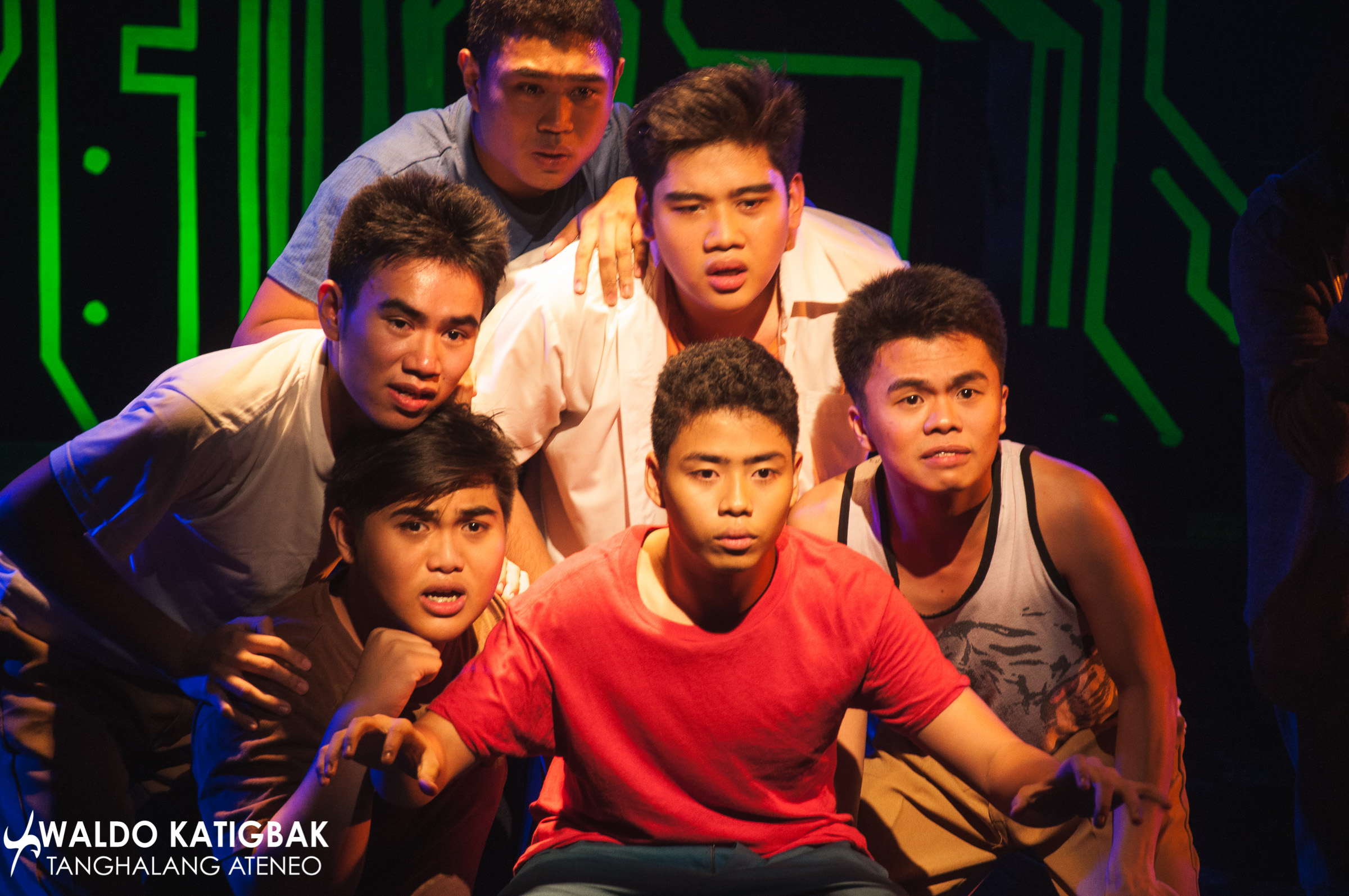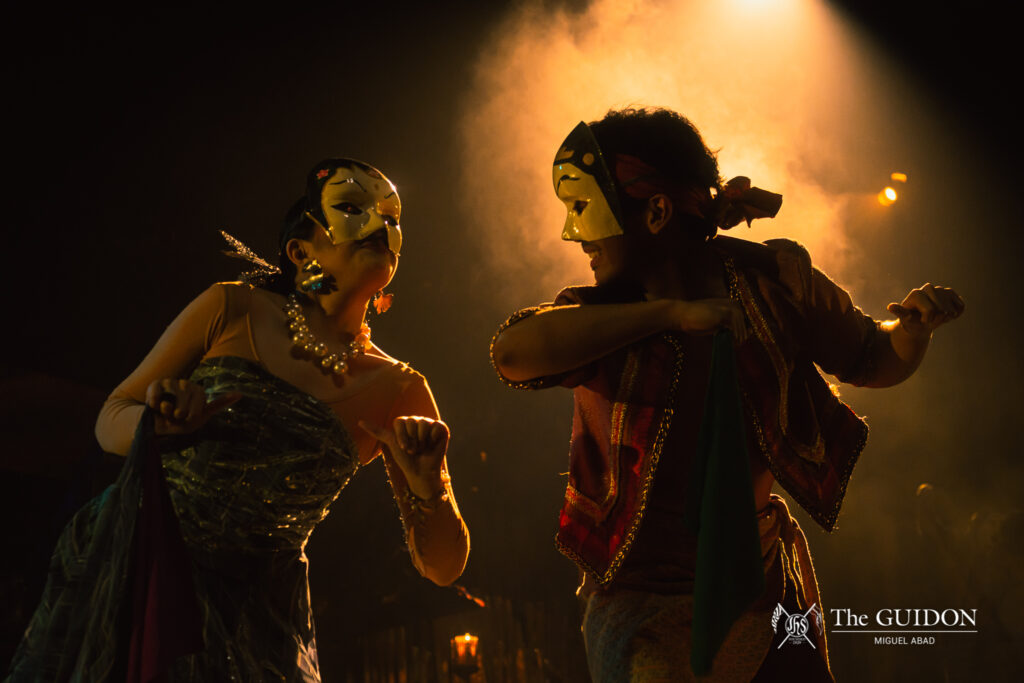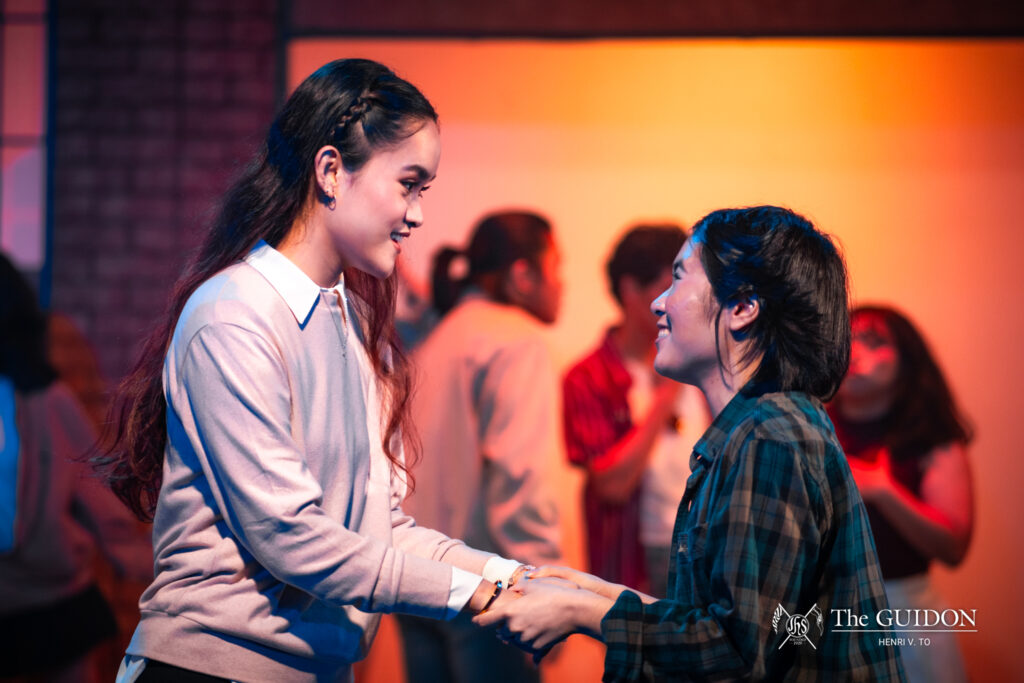The highly acclaimed book Janus Silang at ang Tiyanak ng Tábon by Dr. Edgar Calabia Samar was recently adapted into a play by Guelan Varela-Luarca, with the direction of Charles Yee. The 2017 production of Tanghalang Ateneo of the aforementioned book had just the right amount of comedy and eeriness as it portrayed the book’s mythological aspects, which were brought to life by the superb set design and costumes.
The script also stayed true to Samar’s original work as the actors embodied the characters and gave a face to the figures in the novel. The lead role, Janus Silang, was played by Earvin Estioco, a 12th grader from Ateneo Senior High School. Throughout the play, Estioco embodies the character of a young Filipino boy, from his awkward bashfulness whenever he’s talking to his crush, to his jovial and slightly crass attitude when it comes to his friends.
“I got the role out of nowhere,” Estioco says, but throughout working on the play, he states that he was able to understand and appreciate Janus more. Estioco also proved to have great chemistry with Cloie Hilomen, who played the role of Mica, Janus’ schoolmate and love interest. Although brief, their scenes together manifested the glory of first love. There are times when Estioco and Hilomen had some awkward scenes, however. Their chemistry was very apparent in some parts, but there were moments when the two couldn’t seem to connect, though this may be due to the fact that their characters are high schoolers.
Other superb performances were Bong Cabrera’s portrayal of Juan Silang and Jacob Whittaker’s portrayal of Kuya Renzo. Cabrera showed great skill in shifting attitudes from a loving but strict father, to a creature of the Tiyanak, a Do-ol in pain, while Whittaker added to the fun of the play with his light-hearted flashbacks to the past.
In addition to these, the supporting roles, such as the Tiyanak’s creatures, made us reminisce the stories our parents and grandparents shared about these creatures of the night. These tales embody a facet of Filipino culture, and through Janus’ classmates, the audience was able to see these creatures through the lens of young Filipinos.
The set, care of Gwyn Guanzon, has hexagons as its main feature, perfectly encapsulating the story of Janus Silang with its fusion of modern technology and native Filipino mythology. It is a modern and futuristic take on the features of Tábon Cave, where, as it is said in the book, the Tiyanak originated from. With elevated platforms, a binary board background, and a hexagonal screen that helped with audience interaction, there is no doubt that the set was something that left a large impression on the viewers’ minds.
The minimal lighting used throughout the play and the strategic way they were dimmed when mythical creatures would appear provided the audience with a hair-raising experience as they watched in awe. The eeriness of the play was achieved by the superb costume designs by Mitoy Sta. Ana and the wise use of lighting managed by Meliton Roxas.
Overall, Janus Silang is a play that’s definitely worth watching. Whether you’ve read the book or not, the play’s captivating set and the actors’ amazing embodiment of the characters will undoubtedly leave its viewers in awe.
Patricia A. Dy and Celine D. Natividad are guest writers from The GUIDON Features. Read more of their work from our website.






